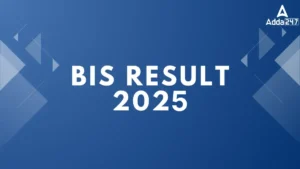Q1. HTTP is a/an ________ protocol.
(a) application layer
(b) transport layer
(c) network layer
(d) Physical Layer
(e) none of the mentioned
Q2. Routers operate at which layer of the OSI model?
(a) physical
(b) transport
(c) network
(d) MAC sublayer of the data link layer
(e) session
Q3. Bits are packaged into frames at which layer of the OSI model?
(a) Data link
(b) Transport
(c) Physical
(d) Presentation
(e) Application
Q4. The layers of the OSI model, from the top down, are:
(a) application, presentation, session, transport, network, data link, physical
(b) session, presentation, data transport, MAC, network, physical
(c) physical, data link, network, transport, session, presentation, application
(d) presentation, application, session, network, transport, data link, physical
(e) application, encryption, network, transport, logical link control, physical
Q5. Which of the following operate at the presentation layer?
1) MIDI
2) FTP
3) SMTP
4) TFTP
5) JPEG
(a) 1 and 2
(b) 1, 3, and 5
(c) 3 and 5
(d) 1 and 5
(e) None of These
Q6. Which of the following are considered to be the upper layers in the OSI Model?
(a) presentation and session
(b) application and presentation
(c) application, presentation, and session
(d) application, presentation, data-link, and transport
(e) application
Q7. Encryption takes place at which layer?
(a) application
(b) presentation
(c) session
(d) transport
(e) data link
Q8. Which of the following computers exhibits the features of both analog and digital computers?
(a) Hybrid computer
(b) Mini computer
(c) Laptop
(d) Mainframe computer
(e) None of these
Q9. 1 Zebibyte is equal to
(a) 250 bytes
(b) 260 bytes
(c) 270 bytes
(d) 290 bytes
(e) None of these
Q10. The amount of memory (RAM or ROM) is measured in __________.
(a) bytes
(b) bits
(c) gigabytes
(d) megabits
(e) hertz
Q11. Windows Explorer is also known as ______________.
(a) USB
(b) File manager
(c) Web browser
(d) Internet server
(e) Network
Q12. What do DOS stands for?
(a) Digital Operating Session
(b) Disk Operating System
(c) Digital operating System
(d) Disk Opening System
(e) Digital Open System
Q13. What happens when you boot up a PC?
(a) Portions of the operating system are copied from disk into memory
(b) Portions of the operating system are copied from memory onto disk
(c) Portions of the Operating system are complied
(d) Portions of the operating system are emulated
(e) The PC gets switched off
Q14. The dbase III plus is mostly used for which of the following?
(a) Office automation
(b) Database management problems
(c) Scientific problems
(d) Calculations only
(e) None of these
Q15. Which out of the following is not a DBMS software?
(a) dBASE
(b) FoxPro
(c) Oracle
(d) SyBase
(e) Data base 2000





 GA Capsule for SBI Clerk Mains 2025, Dow...
GA Capsule for SBI Clerk Mains 2025, Dow...
 The Hindu Review October 2022: Download ...
The Hindu Review October 2022: Download ...
 BIS Result 2024-25 Out for ASO, JSA and ...
BIS Result 2024-25 Out for ASO, JSA and ...





